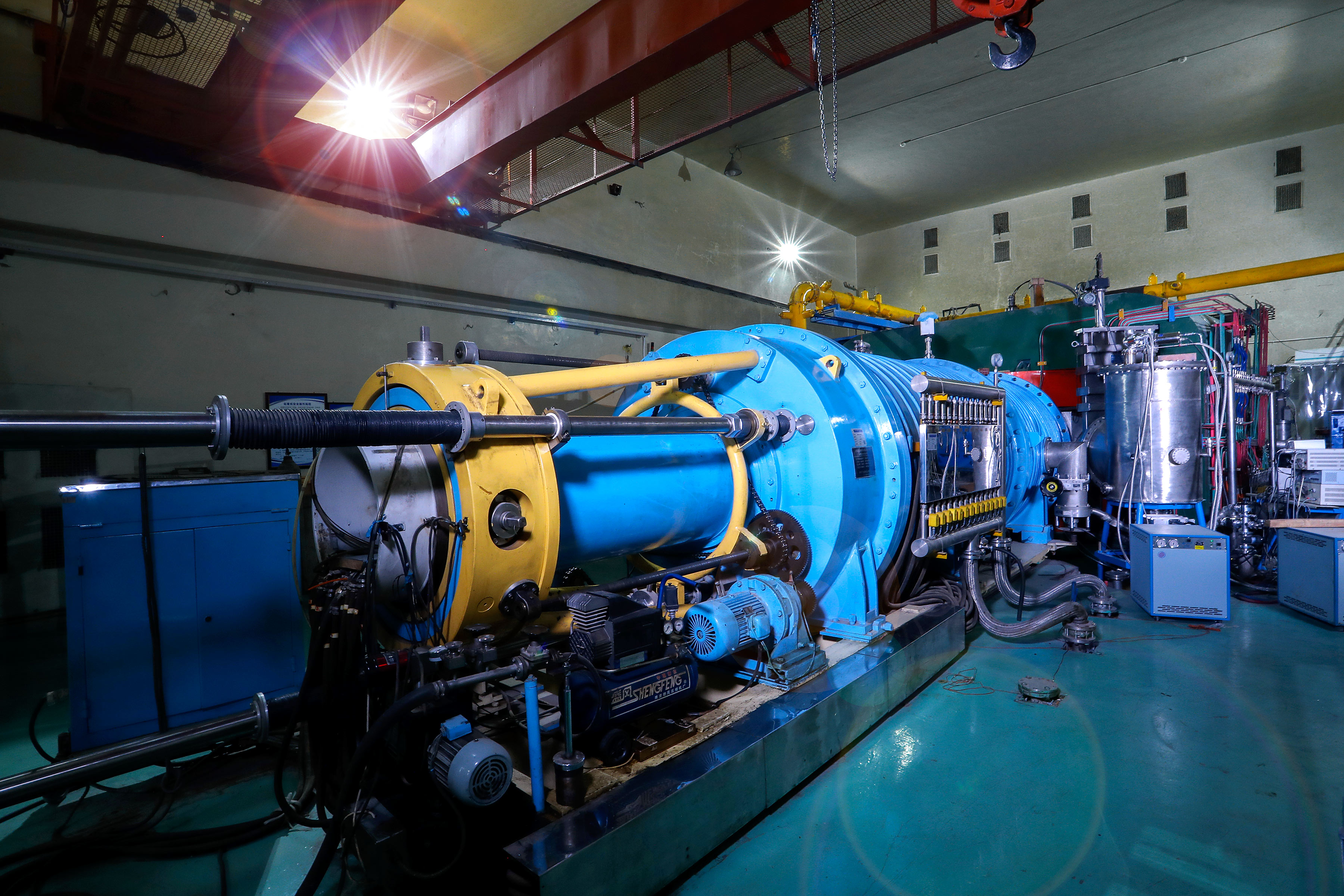HIRFL
The Heavy Ion Research Facility in Lanzhou (HIRFL), operated by the Institute of Modern Physics (IMP), Chinese Academy of Sciences (CAS), is the largest heavy ion research facility in China and one of a few large-scale full-ion accelerating systems in the world, which can accelerate ions from hydrogen to uranium to high energies.
HIRFL comprises Electron Cyclotron Resonances (ECR) ion sources, the Sector Focusing Cyclotron (SFC), the Separated Sector Cyclotron (SSC), the Radioactive Ion Beam Line in Lanzhou (RIBLL), the Cooler Storage Ring (CSR) and some experimental devices, etc.
It is open to domestic and growing international user communities focusing on nuclear physics, atomic physics, heavy ion applications and interdisciplinary research. Based on HIRFL, IMP dedicates to fundamental research in nuclear physics, nuclear astrophysics and atomic physics, including high-precision mass measurement of short-lived nuclei, nuclear structure and reaction, properties of nuclear matter, synthesis of new heavy isotopes, chemistry of super-heavy elements, nuclear reaction in stellar environment, spectroscopy and interactions of highly-charged ions.
SFC is a 1.7m Sector Focusing cyclotron, which is upgraded from the 1.5m classic cyclotron built in 1962. Running alone, it can provide beams for low energy heavy ion physics studies.

SFC (Image by YUAN Haibo)
In December 1988, Lanzhou Heavy Ion Accelerating System (SFC and SSC), designed and constructed by IMP, was completed and put into operation. In August 1991, the National Laboratory of Heavy Ion Accelerator in Lanzhou was approved by China’s State Planning Committee and open to the public.
In July 1997, a middle energy radioactive ion beam line (RIBLL) with innovative structure was constructed at HIRFL, which has paved the way for research on radioactive ion beam physics in China. With the superconducting ECR ion source built in 2005, which has the best performance in the world at that time, the operation of HIRFL has reached an internationally advanced level. In June 2005, the successful acceleration of uranium ions was carried out.
The Cooler Storage Ring at the Heavy Ion Research Facility in Lanzhou (HIRFL-CSR) was built in 2008. HIRFL-CSR is a multi-functional facility, not only accumulating and cooling, but also accelerating heavy ions from Carbon to Uranium up to 1 GeV/u to hundreds of MeV/u. Internal target experiments with highly-charged ions, external target experiments with both extracted stable and radioactive beams, and high-precision mass measurement experiments have been carried out.

HIRFL-CSRm (Image by YUAN Haibo)
Based on HIRFL, IMP has achieved many achievements over the past years. More than 30 new isotopes have been synthesized, among which two are super-heavy isotopes; Since 2009, 10 isochronous mass measurement experiments have been conducted and high-precision mass data of short-lived nuclei were obtained; the first domestic heavy ion therapy equipment, the heavy ion medical machine (HIMM), has been independently developed; new species and strains of several crops have been fostered by utilizing heavy ion irradiation induced mutation; and the popular plantation of optimized sweet sorghum in western China has developed into a stable industrial chain, contributing to the regional economic development.


 甘公网安备 62010202000713号
甘公网安备 62010202000713号


